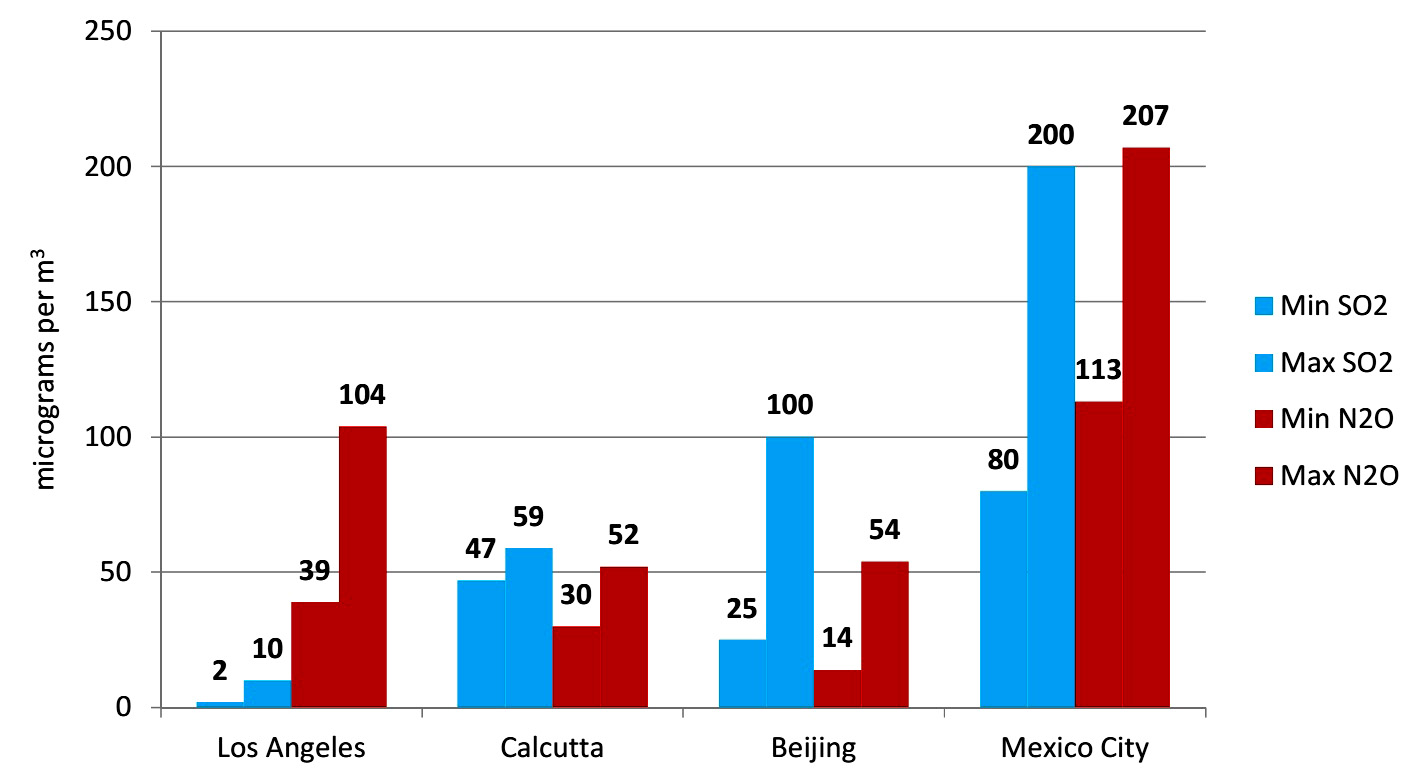IELTS Writing Recent Actual Test 50
WRITING TASK 1
You should spend about 20 minutes on this task
The chart shows the average daily minimum and maximum levels of air pollutants in 4 cities 2000.
Write at least 150 words.

WRITING TASK 2
You should spend about 40 minutes on this task
Write about the following topic:
Some universities offer online courses as an alternative to classes delivered on campus. Do you think this is a positive or negative development?
Give reasons for your answer and include any relevant examples from your own knowledge or experience.
Write at least 250 words.
SAMPLE ANSWER IELTS WRITING TEST 50
WRITING TASK 1The given bar chart presents the daily minimum and maximum levels of SO2 and N2O which caused pollution in 4 different cities (Los Angeles, Calcutta, Beijing and Mexico City) in the year 2000. Overall, Mexico City was by far the most contaminated by the two mentioned pollutants among the four cities.
In Los Angeles, the quantity of SO2 emitted into the atmosphere was the lowest of all cities, with a minimum average of 2 micro-grams per m3 and a maximum average five times as much, at 10 micrograms. The levels of N2O emissions were much higher with the maximum daily average level reaching up to more than 100 micro-grams per m3. Meanwhile, the atmosphere in Mexico City was severely polluted by SO2 and N2O emissions with the daily minimum and maximum averages of 80 and 113 micro-grams per m3 respectively.
In contrast to Los Angeles and Mexico City, the amount of pollution caused by N2O in Calcutta and Beijing was less than that caused by SO2. The daily average maximum figures for SO2 emissions were 59 micro-grams per m3 in Calcutta and 130 micro-grams per m3 in Beijing while the average maximum figures for N2O were just over 50 micro-grams per m3 in both cities.
(205 words)
WRITING TASK 2In many universities, distance learning through an online platform is provided for students as an option to replace traditional classrooms. In my view, although such a development could be detrimental in a number of ways, overall, I believe it to be an essential step forward.
On the one hand, this method of remote learning, without the need for regular face-to-face contact with teachers in a classroom, is negative for two reasons. Firstly, students who study online do not develop comprehensively in the way that other students who attend classes at school do. During online courses, it is difficult for students to make friends or attempt to compete with their peers. This is often linked to the fact that those learners seem to undervalue the significance of interaction and rivalry with classmates in an educational environment, which are actually regarded as great stimuli for scholastic success. Secondly, participants of online learning programs have a tendency to procrastinate more and poorly allocate an appropriate amount of time to complete assignments. This form of studying requires tremendous self-discipline as well as excellent organization and time management skills as students usually struggle with balancing their coursework with other priorities, and quickly become unmotivated without direct guidance from instructors.
On the other hand, online learning is proving to be a great alternative, although traditional universities are still widely considered as the best way to acquire knowledge and a qualification. Access to all resources within a traditional course is offered, which empowers learners to freely choose from a wide range of different subjects, from science to economics. Furthermore, lower costs and the widespread presence of the Internet allow unlimited numbers of participants, regardless of not only their financial background but also current living location. For example, Coursera is a website that offers a variety of courses at reasonable prices and presents valid certification for participants upon completion of each course.
In conclusion, though there are some drawbacks to studying via online courses, I do believe that this method is a revolutionary step in contemporary tertiary education systems.
(341 words)
